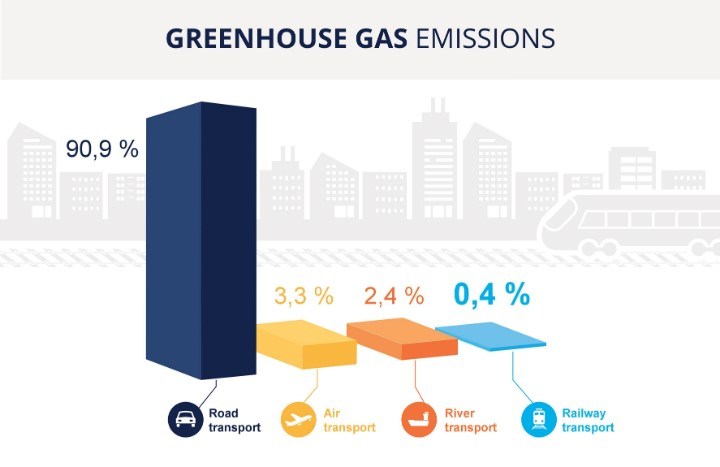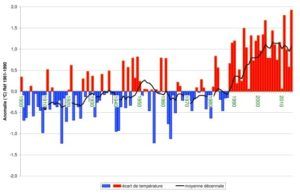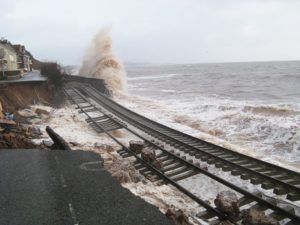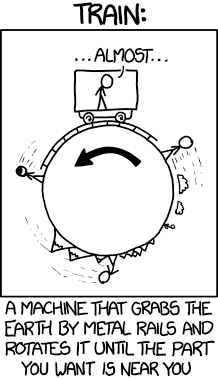Light at the end of the tunnel – SNCF won’t miss the climate change train

Railroads symbolize our past but could also be our future. Optimized railroads could be the most efficient way to reconcile transport and climate change. The old French railroad SNCF believes it is up for the challenge and will not train in vain!
SNCF is the French national railway company split between operator and network owner. This sizeable business employs around 250,000 people and generates ~€30bn of sales (70% in France). SNCF moves 1.1bn passengers (5m per day) and 20bn ton-kilometer freight each year. [1] SNCF operates the absolute fastest wheeled train [2] but also a fraction of diesel trains and coaches. French law requires state-owned enterprises to calculate their greenhouse gas footprint; SNCF uses this as a benchmark to become the transport of choice.
At first glance, rail seems to be the best in class transport with regards to greenhouse gases emissions (after sailing!).
Although rail accounts for 10%+ of France’s passenger and freight transport, it emits less than 1% of transport-related CO2. SNCF operates a 30,000kms network (50% electrified). Electric lines account for ~90% of passenger and freight transport. Electric trains generate 10x less emissions than car and 20x less than plane. In a nutshell train transport is the greenest transport solution assuming reasonable electricity input sources. This is particularly true as French trains are atom powered! 75%[3] of French electricity is generated from nuclear power, the highest level in the world resulting from an independent energy policy. This direct link to the grid allows for unique flexibility as trains are compatible with all renewable energies: wind, solar, biomass, tide, nuclear (fusion?)…

SNCF seems uniquely positioned to take advantage of climate change with increasing regulations, costs and social awareness. Its vision pictures a railway backbone leveraging efficiency. How SNCF positions itself as a winner?
“We want to do absolutely everything apart from planes” says its CEO[4].
For passengers, SNCF plays on seduction and convenience. For instance, each ticket indicates CO2 emission showcasing the advantage of environment friendly collective rail travel. For convenience, all tickets and booking are mobile based. Taxi and car-sharing are pre-booked as part of Door-to-Door solution. This also means that local trains become more important than the historical TGV darling (the efficient long distance high speed champion). But speed still matters for overall efficiency[5]. Trains can also carry your car to the French Riviera so that you can cruise along the Mediterranean while avoiding traffic.
For freight, SNCF uses costs and last mile integrated solution. Some routes are optimized to have transport trucks mounted on trains saving time, fuel and CO2 (60kt CO2 p.a.). Logistics centers are set near city stations coupled with low emissions last mile delivery solutions. The continuous network optimization and increase of train capacity (length & speed) allows increasing offering to freight providers.
But climate change also comes with challenges.

The main one comes from weather stress on networks. France temperature rose 1°C[6] over last century. French weather pattern started showing more extreme events (thunderstorms, snow, floods) and more temperature variability, this puts pressure on 30,000kms of tracks, 27,000 bridges, 15000 trains per day[7]. So the track network needs to be monitored and maintained at a higher cost. To address weather variability SNCF reviewed its approach to focus on[8]:
- Increase knowledge: developing accurate emissions measure, granular risk mapping
- Invest in climate resiliency: capex design (e.g. heavy duty AC), preventive maintenance
- Given its state ownership and long term view, SNCF are willing to implement all “no regret” measures[9], i.e. yielding positive results whatever the pace of climate change. As the 19th century showed us, railroad are a long term investment. Planning is of the essence. Current capital expenditures may have an impact lasting a century!
- Engage stakeholders: Staff, organizing authorities, public authorities, customers, suppliers
- SNCF took part of the COP21 conference and raised awareness internally. In 2015 SNCF realized a company-wide challenge whereby each employee answered to “How do you adapt or anticipate climate change in your job?”. This gave birth to IMPRESSYF a 9-people engineering team applying meteorology models to network resiliency.


Despite lowest emission, SNCF thrives to reduce its emissions further:
- Continuous improvement: efficient driving, pool traffic flows and heat energy conversion[10]…
- Fossil fuel reduction: less diesel trains, cut consumption for buildings (LED in stations)…
SNCF sticks to its emission reduction commitment of 40% for passengers and 33% for freight over 1990-2020[11]. Does this convince you that a green railcars future is rosy?
Though rail remains a key component of any sustainable transport solution, some negative externalities would arise as railways share grows. The tunnel effects isolates communities crossed by train but far from stops. B-roads let you stop anywhere. Imagine an LA-SF hyperloop, if you are not in the centers, you are nowhere!
Tunnel Effect – Hop on, Hop off but only at the station
(783 words)
[1] SNCF Annual Report 2015
[2] Shanghai Maglev Line operates a 30km magnetic levitation line serving Pudong Airport
[3] AIEA and http://www.gridwatch.templar.co.uk/france/
[4] FT the Monday Interview 16th August 2015
[5] Hirofumi FukuyamaYuichiro YoshidaShunsuke ManagiEmail author, Modal choice between air and rail: a social efficiency benchmarking analysis that considers CO2 emissions, Environmental Economics and Policy Studies, June 2011, Volume 13, Issue 2, pp 89–102
[6] MeteoFrance – http://www.meteofrance.fr/climat-passe-et-futur/le-rechauffement-observe-a-l-echelle-du-globe-et-en-france
[7] SNCF profil 2015 and SCNF Reseau profil – http://www.sncf-reseau.fr/en/the-railway-network – Indeed there seem to be a bridge every kilometer! This is probably an inclusive definition of bridges.
[8] RSE Report 2015 published on SNCF website
[9] ParisTech Review “Of Trains & Climate” Jean-Louis Jourdan, Alexandre Kaddouri, Joëlle Tournebize; Sustainable Development Direction, SNCF / May 2nd, 2013
[10] W. Gunselmann, Technologies for increased energy efficiency in railway systems, 2005 European Conference on Power Electronics and Applications
[11] SNCF commitments: http://www.sncf.com/fr/groupe/nos-engagements/impacts-environnementaux
Pictures:
Xkcd 1366
RFF 2009 – Aiming for a Sustainable Network/ Strategic Orientations 2008-2012
Private Caption




This is a really interesting perspective on how the demands of climate change drive public infrastructure innovation and development. The US would be wise to look to this and other countries whose investments in public transportation have yielded such positive results. Perhaps there is an opportunity to leap from our history-constrained rail network to a leading-edge transportation system that American business and individuals can afford and actually prefer to use over traditional vehicle transportation.
Your analysis does a great job demonstrating how an old technology can be harnessed to meet a very modern challenge. The numbers as it relates to the environmental benefits of train travel (10x more efficient than car travel and 20x more efficient than traveling on a plane) speak for themselves. Based on your framework, it’s clear that trains in France already have a meaningful environmental impact given how prevalent train travel in France must be; after all, a train company can only generate €30bn in annual sales if it’s moving quite a few passengers!
To me, there appears to be a potentially substantial incremental impact of convincing more people to take the SNCF train line more often. For every new passenger that opts to take the train rather than drive his/her car or hop on a plane, the marginal environmental impact should be almost entirely positive. Especially for less popular travel times (i.e. when the train system is less crowded), it’s likely that incremental passengers would be boarding trains that would have been running anyway, just half empty. In those cases, the SNCF wouldn’t have to add additional trains, even if the number of additional passengers were reasonably large.
In this context, I wonder if there are ways to incentivize or otherwise convince more Frenchmen to take the train? To the extent that service delays or other inconveniences are dissuading people from taking the train, addressing those issues head on would give an indirect, but perhaps substantial boost to the net environmental savings the SNCF produces versus other methods of transport.
Very interesting post! The fact that SNCF emits only less than 1% of transport-related CO2 although rail accounts for more than 10% of France’s transport is just fascinating. I also really like its awareness and attitude toward social responsibilities (I remember that I used frequently SNCF when I was living there but I did not know that each ticket indicated CO2 emission). I believe that France’s railway technology is one of the most advanced public transportation technology in the world, so I wonder if there are ways to export them to countries like the US (or are they already trying to do so?).